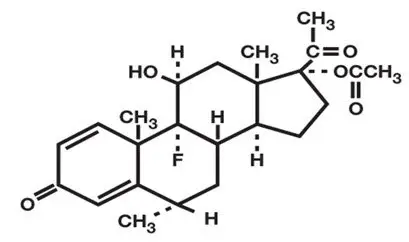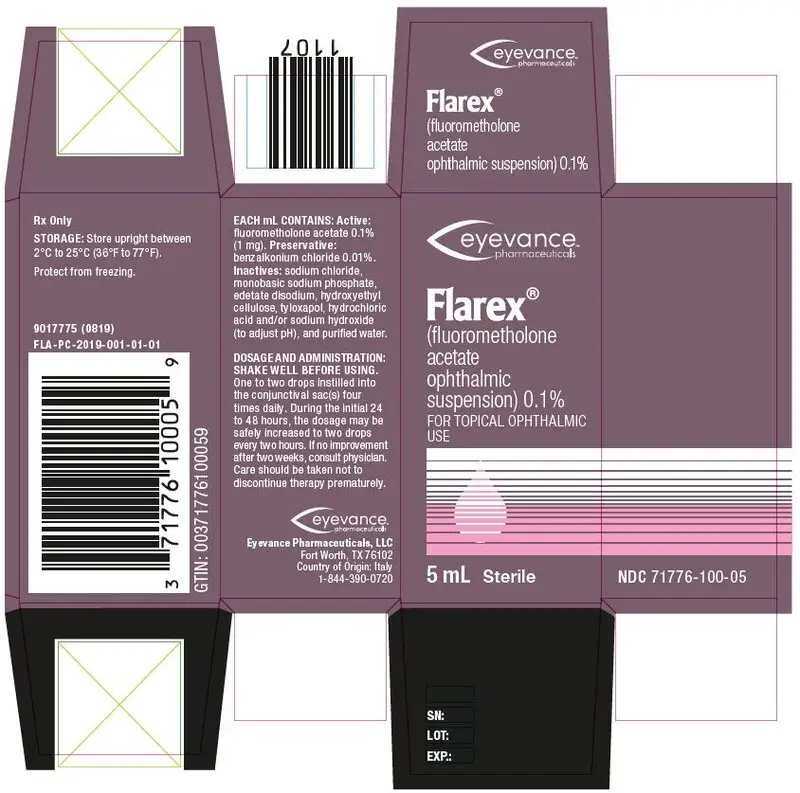Flarex Description
FLAREX
® (fluorometholone acetate ophthalmic suspension) 0.1% is a corticosteroid prepared as a sterile topical ophthalmic suspension. The active ingredient, fluorometholone acetate, is a white to creamy white powder with an empirical formula of C
24H
31FO
5 and a molecular weight of 418.5. Its chemical name is 9-fluoro-11β, 17-dihydroxy-6α-methylpregna-1, 4-diene-3, 20-dione 17-acetate. The chemical structure of Fluorometholone Acetate is presented below:

Each mL of FLAREX (fluorometholone acetate ophthalmic suspension) 0.1% contains: Active: fluorometholone acetate 1 mg (0.1%).
Preservative: benzalkonium chloride 0.01%.
Inactives: sodium chloride, monobasic sodium phosphate, edetate disodium, hydroxyethyl cellulose, tyloxapol, hydrochloric acid and/or sodium hydroxide (to adjust pH), and purified water. The pH of the suspension is approximately 7.3, with an osmolality of approximately 300 mOsm/kg.







